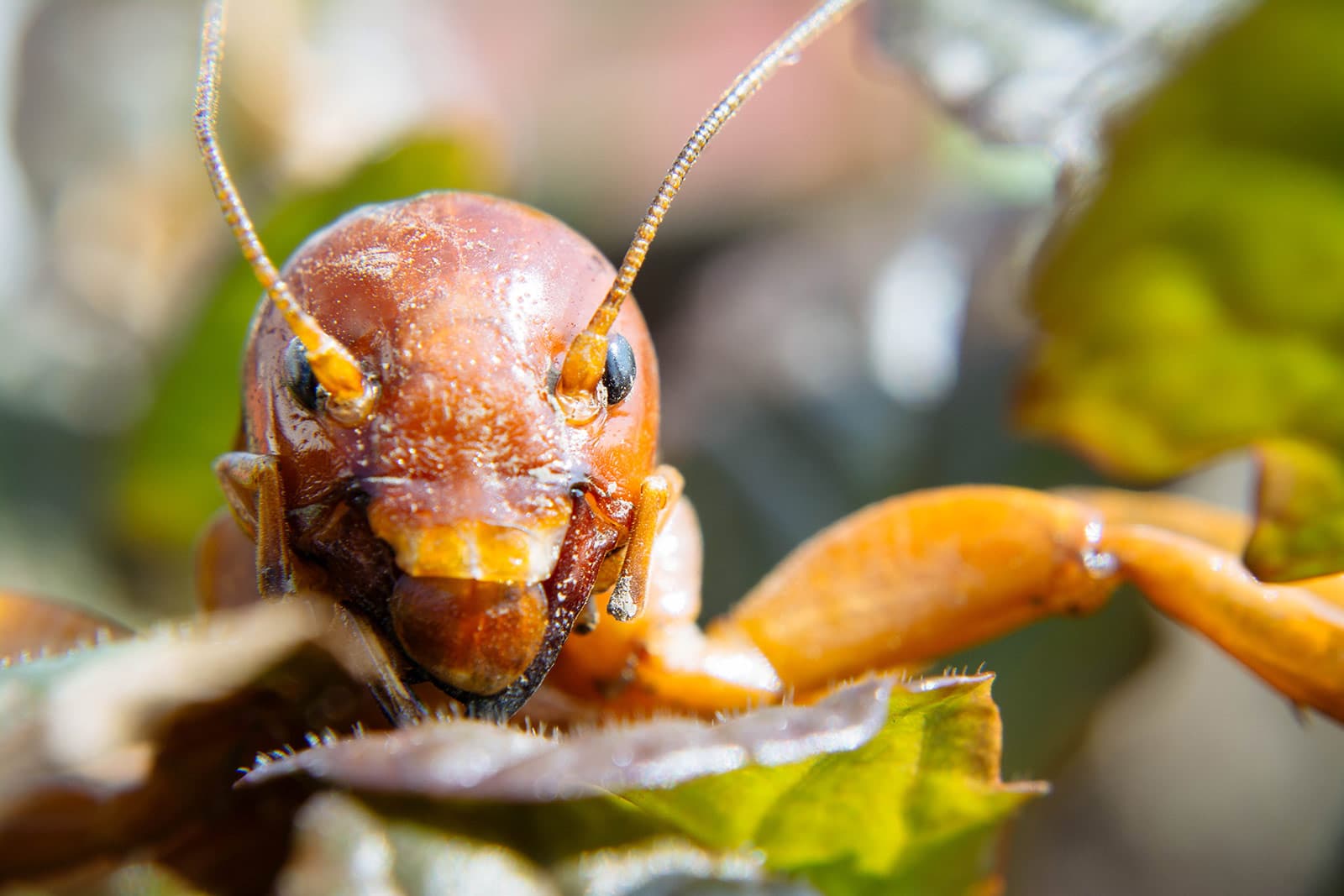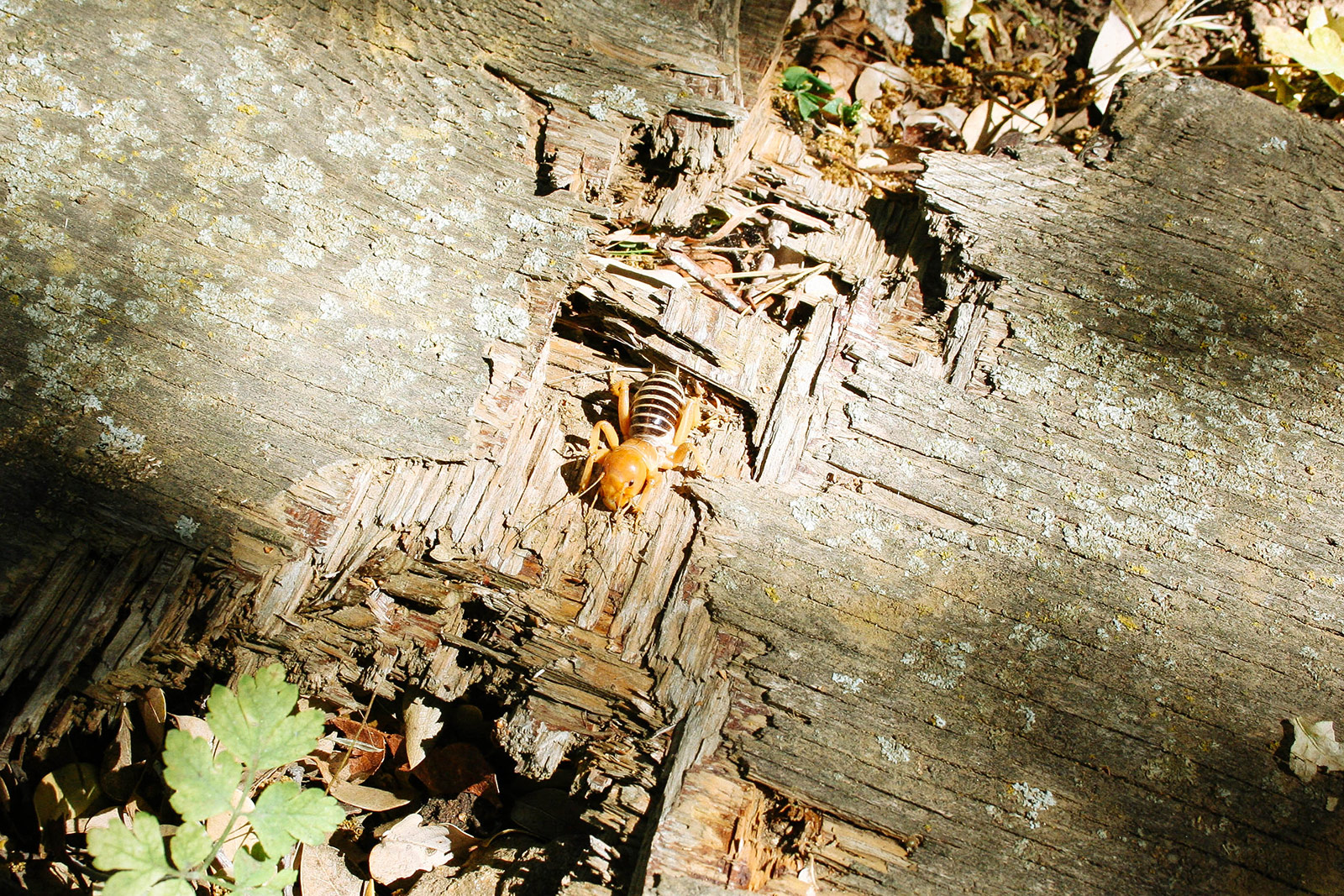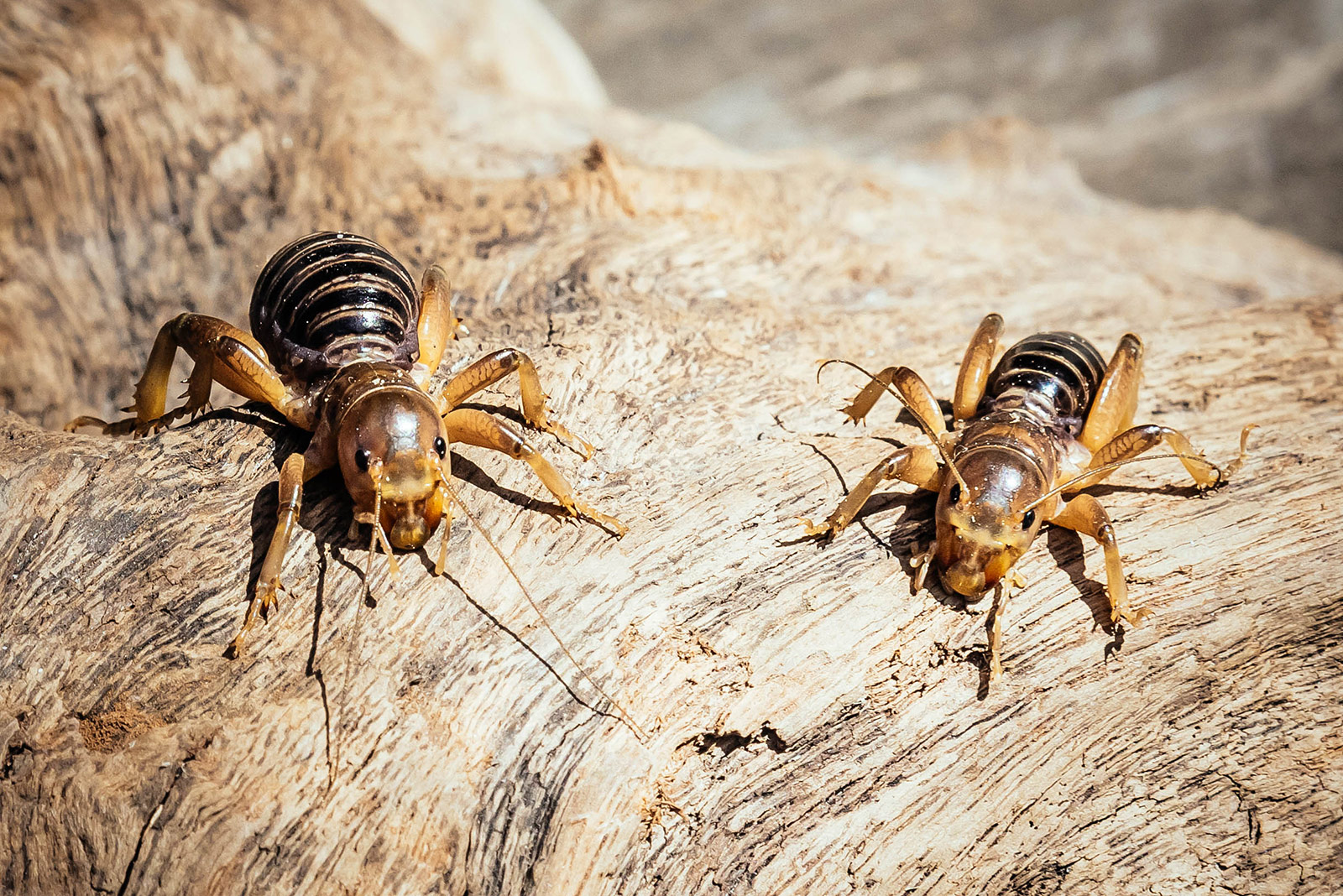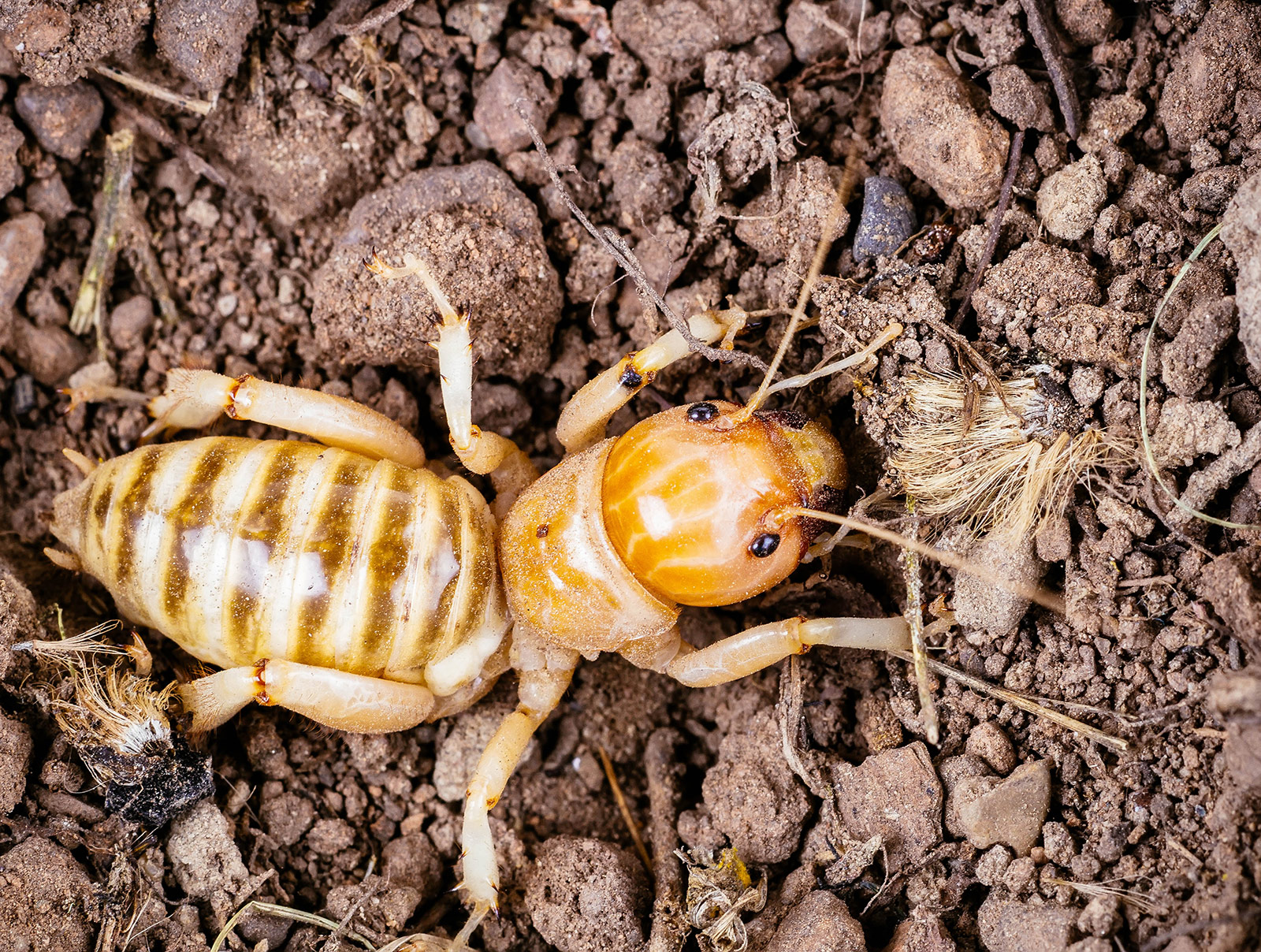Let’s just get one thing out of the way here: While not poisonous, a bite from a potato bug can certainly rattle you! Potato bugs have strong jaws that can sink into the skin and cause a moderate amount of pain if they bite you.
Luckily, it isn’t common to get bitten by potato bugs and they don’t inject venom. While pesky, these bugs are naturally shy and will scurry away from humans. The only time they might bite is when they’re cornered or provoked, whether intentionally or not.
If you’ve come across this unusual bug, don’t be alarmed and definitely don’t try to smush it. There’s so much misinformation online surrounding the potato bug, and that’s because it’s often mistaken for the Colorado potato beetle, an entirely different insect altogether.
So, want the real lowdown on this strange-looking bug that’s more accurately known as a Jerusalem cricket?
Keep reading to learn where they come from, how to manage them in your home and garden, and what to do if you’ve been bitten by a potato bug.
What are potato bugs?
Here’s where most people (and amateur blogs) get mixed up. The name “potato bug” refers to two different insects: Jerusalem crickets (Stenopelmatus fuscus) and Colorado potato beetles (Leptinotarsa decemlineata).
Today, I’m talking about the big wingless insect with alien-like features that’s often called a potato bug, because it can sometimes be found in potato fields, feeding on the roots and tubers of potato crops.
Jerusalem crickets are subterranean nocturnal insects that look like a cross of a large ant and fat wasp. They have disproportionately large, humanoid heads and strong, sizable mandibles and can grow up to 3 inches in length, adding to the shock factor. (Need a point of reference for scale? Check out this Jerusalem cricket perched on a human hand!)
Their heads, thoraxes, and legs are typically shiny and yellow- or amber-colored, and their abdomens alternate with black and brown bands.
Because of their eerie appearance (and the foul odor they emit when they feel threatened), Jerusalem crickets are also known as skunk bugs, skull bugs, mother of scorpion, or “what the f@&# is that?!”
On the more pleasant side, they’re also referred to as earth baby or child of the earth (niña de la tierra in Spanish) since they spend most of their time in the ground. I’ve even heard them called child’s face (or its Spanish equivalent, cara de niño), but let’s hope no child actually has that crazy-looking face.

Jerusalem crickets get around on six spiny legs that help them dig into the soil. They can’t fly and despite having “cricket” in their name, they can’t jump (or chirp) either.
The insects are slow to grow, requiring two to five years to reach maturity, and live in the adult stage for only two to six months (depending on geographical latitude). It’s believed that more than 100 species of Jerusalem crickets exist, but only about a third of them have been formally described in scientific literature.
Where did the name Jerusalem cricket come from?
The Jerusalem part is still a mystery, but one possibility is that the insects’ bodies resemble a Jerusalem cross. Or, the name could be derived from yelps of “Jerusalem!” by startled people in the 19th century when they came across these unique bugs. (Supposedly, that was a common expletive for the time.)
There’s also a theory for the cricket name. According to this source, early entomologists thought this strange new insect resembled the king crickets of Australia and the giant wetas of New Zealand, so the “cricket” name stuck.
Despite all this, Stenopelmatus fuscus is neither a true cricket nor a true bug. Go figure.
Where can you find Jerusalem crickets?
Jerusalem crickets live in the western and southwestern United States and along the Pacific coast, ranging from British Columbia in the north to Mexico in the south. When they emerge from the ground (usually after rainfall), they’re often seen crawling around compost piles and other dark, damp areas, or hiding under rocks, logs, bark, and leaves. They prefer sandy soils that are easy to burrow in.

If you’re working in the garden, it’s common to find Jerusalem crickets as you’re clearing away yard debris or cultivating the soil. On rare occasions, you might even find them inside the house if there’s some moisture to attract them.
What do Jerusalem crickets eat?
While Jerusalem crickets have occasionally damaged commercial potato fields, they are not considered serious pests like the Colorado potato beetle (you know, the other potato bug that gives this one a bad name).
In fact, Jerusalem crickets should be thought of as beneficial insects, as they feed on decaying plant matter, dead roots, and small insects (including those that you do consider garden pests). By breaking down organic matter and burrowing underground, Jerusalem crickets actually help with plant growth and soil aeration.
Now, in large numbers Jerusalem crickets can be a nuisance, especially if your yard is completely devoid of organic waste for them to feed on. This means they might turn to the roots of your carrot, potato, and other root crops, stunting their growth.
How to get rid of Jerusalem crickets
As I mentioned above, Jerusalem crickets are great decomposers and considered a friend in the garden. But if their presence freaks you out too much, the best way to get rid of Jerusalem crickets is to make your yard less hospitable to them.
That means tidying up places where they like to shelter: lumber, wood piles, rock mounds, and compost heaps. Clear away anything that holds excess moisture, particularly if it’s near your house, and limit watering to garden beds (so if you run sprinklers, check that the sprinkler heads aren’t aiming at things that aren’t plants).
Fluff up mulch piles and don’t let them get too wet. When exposed from their hiding spots, Jerusalem crickets make for good eatin’ for bats, rodents, skunks, owls, and small hawks, which can help you take care of an infestation.

If you find a Jerusalem cricket inside your house, physically remove and dispose of it (if you must) or relocate it to your garden, where it can be of better use. It’s easily caught with sticky board traps placed along walls, or captured by placing a glass over the insect, slipping a piece of paper under it, then turning the glass over.
Make sure you keep an eye on any dark, damp areas, like slow leaks in your plumbing or condensation on walls and windows. If you live in a humid climate, it might be helpful to run a dehumidifier in your kitchen and bathrooms to reduce the chances of Jerusalem crickets making themselves at home in those places.
Rest assured, however, that indoor invasions are rare and do not necessitate any type of chemical treatment. In all honesty, you’re more likely to encounter Jerusalem crickets while working in your yard.
What happens if a Jerusalem cricket bites you?
The first thing to remember is that Jerusalem crickets are not aggressive, despite their sinister appearance. They don’t want to bite you, but will do so in self-defense.
So if a Jerusalem cricket feels threatened or startled, make sure you give it some space! It’ll make itself look bigger and more menacing by lifting its hind legs over its body or somersaulting on its back, throwing a hissing sound at you, then opening its mandible wide to take a chomp.
If a Jerusalem cricket bites you, the first thing you’ll notice is a moderate to sharp stinging sensation that will usually last a few minutes.
Because there’s no poison or venom in the bite, there shouldn’t be any significant swelling. However, some Jerusalem cricket bites may cause sores on your skin or an itchy rash. These are usually not serious conditions and tend to go away on their own or with standard topical treatment.
How to treat a bite from a Jerusalem cricket
To prevent the bite mark from becoming infected, be sure to clean the affected area with soap and water. Use a hydrocortisone ointment or an anti-itch gel (like Bendaryl or Tecnu Calagel), if needed, to relieve redness or itching. Most pain is short-lived and a Jerusalem cricket bite won’t do any lasting damage.
View the Web Story on Jerusalem crickets.
















I found a potato bug of this kind very large. Where do I relocate it to a dirt area with lots of holes from possibly gophers or a shrubby area?